What Hoteliers Can Learn from Airbnb’s Digital Storytelling
Article Highlights
- 19% of leisure and 18% of business travelers have used Airbnb at least once.
- Airbnb is selling travelers on destination value propositions, while most hotels are still talking about price and occupancy.
- Airbnb stands out for its ability to create a better digital experience, leveraging storytelling to create an emotional connection with travel shoppers.
- Airbnb provides tips to their hosts to improve their listing and digital storytelling. Hoteliers should be following many of these tips as well.
The rise of Airbnb has been nothing short of meteoric. What started in 2008 as three friends renting air-mattresses out of their San Francisco apartment, has transformed into one of Silicon Valley’s biggest unicorns, with a valuation of $31 billion. Airbnb poses a real threat to hotels, but by understanding why Airbnb has become so popular, hoteliers have the ability to fight back.
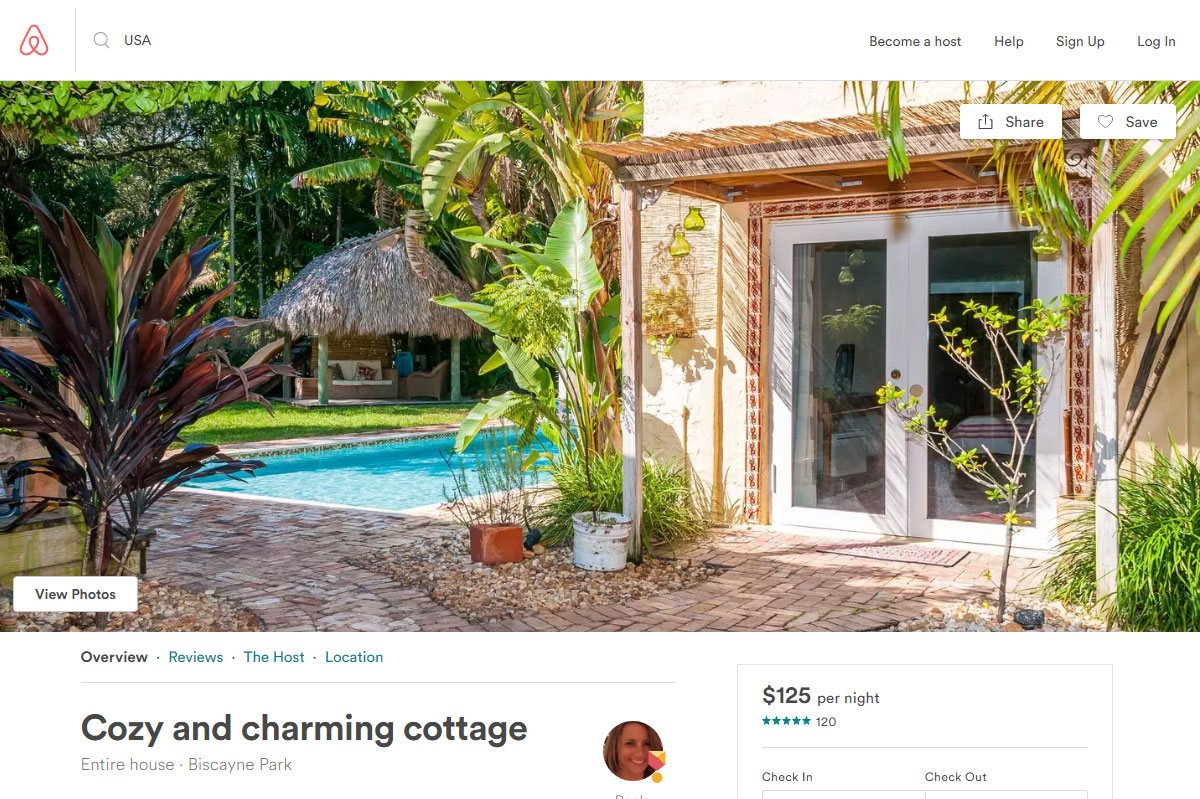
Most Airbnb listings lead with images of their most desirable features, in this case a beautiful backyard and swimming pool
The Airbnb Threat
A 2016 survey by Morgan Stanley found that 19% of leisure travelers and 18% of business travelers have used Airbnb at least once. Those numbers were expected to rise to 25% and 23% respectively this year. However, what should be most alarming to hoteliers is that a staggering 60% of consumers who have used Airbnb, or other “peer to peer lodging” sites, prefer them over traditional hotels.
This was reinforced by a recent Phocuswright study, which found that Airbnb receives dramatically more repeat bookings than hotels and major OTAs. In fact, Airbnb’s repeat booking rate is approximately 5X higher than Booking.com or Expedia and roughly 3X higher than major hotel brands.
Why Is Airbnb So Successful
Airbnb’s success, in no small part, boils down to its ability to leverage technology to create a superior digital experience; one that reflects evolving consumer behaviors. There is no reason why hoteliers can’t offer the same experience to travel shoppers, but as Mary Meeker’s 2017 Internet Trends points out, Airbnb is investing in destination value propositions, while hotels are still talking about price and availability, which is counter to how people want to buy.
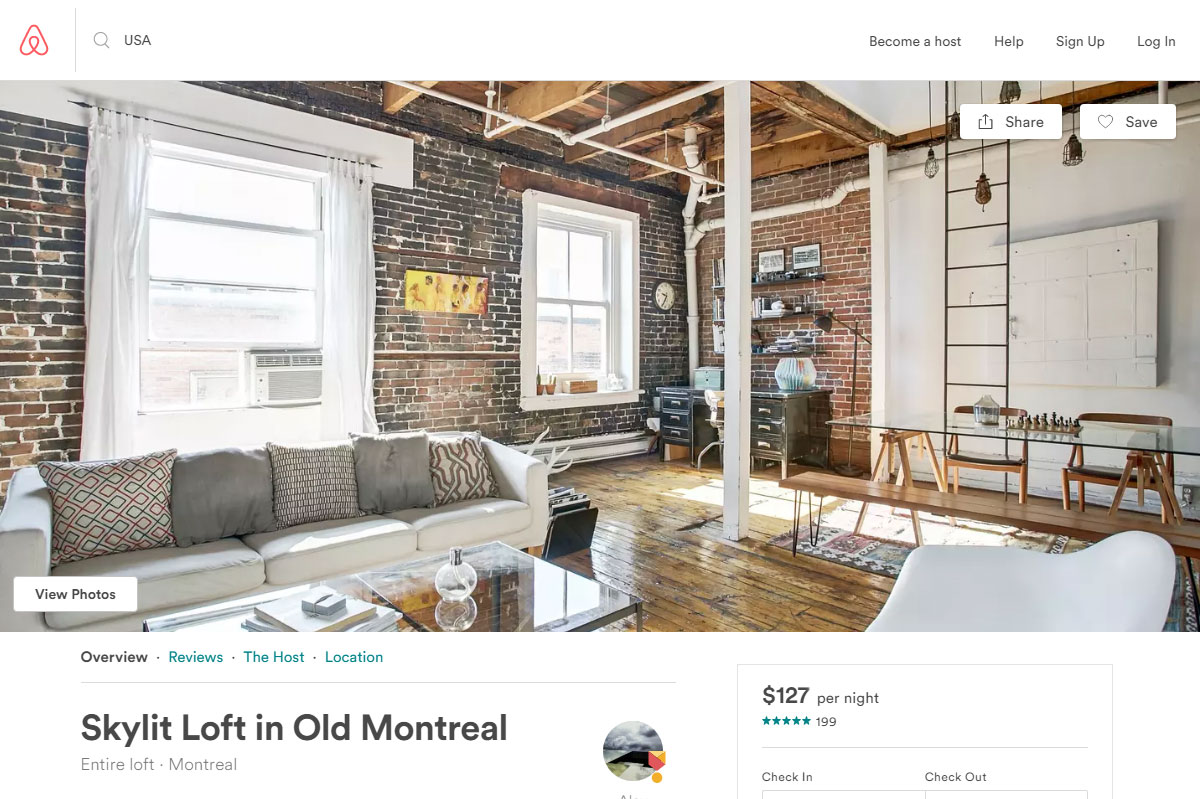
Warm and trendy, travel shoppers can easily imagine relaxing in this open concept living room
Hotels Can Learn From Airbnb
Airbnb understands that the travel experience begins long before a traveler ever arrives on-property. Typically it starts online, which is why Airbnb has created a framework for their listings where travel shoppers can easily find basic information like price, reviews and amenities, as well as a detailed description of the property and nearby attractions, written by the host.
To ensure hosts are providing information travel shoppers really care about, Airbnb provides a Hosting Standards page that helps hosts craft their digital story and drive bookings. Many of these principals can (and should) be applied by hoteliers to their own website to provide a similar experience for travel shoppers.
Here are 5 tips from Airbnb that hoteliers can adopt to create a better travel shopping experience and drive more direct bookings.
1. Use a variety of high-quality photos with captions, and write a detailed description of the space
As Airbnb states on their website, first impressions matter. And travel shoppers’ perception of your property often comes down to the images on your website. High-quality images let travel shoppers visualize the on-site experience and help to create an emotional connection. Low quality images, on the other hand, like grainy photos, small photos, poor lighting, or a lack in variety, will have them looking elsewhere.
It’s important that you’re showing the type of images travel shoppers want to see. Far too many hotels lead with images of their exterior building, but guest rooms are the most commonly viewed hotel image. Travelers want to see the areas where they will be spending the most time at your property: your guest rooms, the pool, the restaurant, lounge and lobby. Focus on showcasing the parts of your hotel that get the most traffic and make sure to include captivating descriptions that enhance the images.
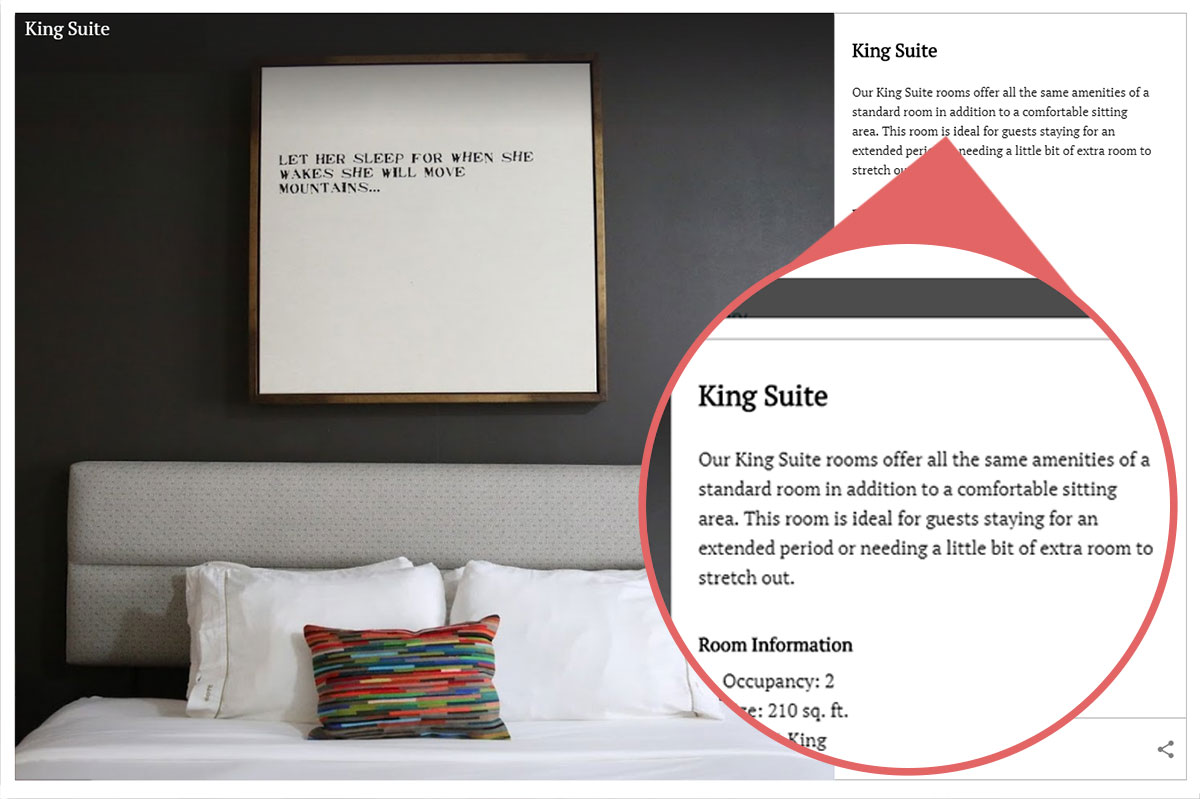
Hotel Ylem mixes high-quality images with captivating descriptions when describing their guest rooms
2. List your amenities and ensure each one is available and operational
People travel for different reasons, and different amenities will matter depending on the traveler. For example, business travelers likely care more that your hotel has a business center, printing services or a desk in the room, whereas families on vacation might care more about your pool or roll-in crib for the room.
Your amenities could ultimately be the deciding factor for someone to book with you. Make sure all information about your amenities is accurate and up to date. If you have a pool, but it is currently under renovation, let travel shoppers know that it will be out of service. If your guests come expecting certain amenities and can’t make use of them, you’re asking for a negative review.
3. A higher price may lead travel shoppers to assume your listing is extra luxurious – they shouldn’t be expecting a castle when they arrive at a cottage
While your pricing should be reflective of both your local market and your hotel’s comp set, what’s more important to take away from this statement is that you should be using digital storytelling to accurately represent your property. Guests should not be expecting 5 star accommodations from a limited service hotel.
Every travel shopper uses a different set of criteria when shopping for a hotel, so there will continue to be demand for both luxury resorts and roadside motels. Be honest about what your property has to offer and what type of travelers make up your target market. When your digital storytelling accurately reflects the on-site experience, you will not only be able to drive more direct bookings, but your guests are more likely to enjoy their stay, knowing they got what they paid for.
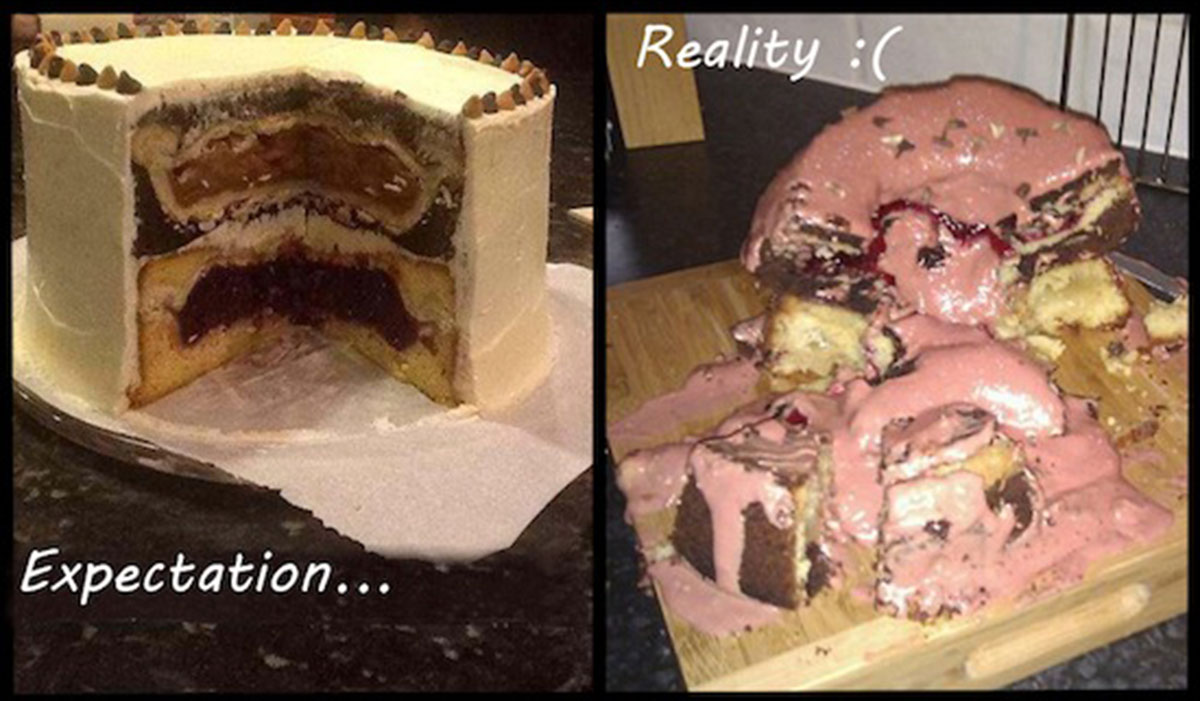
Make sure your digital storytelling is setting realistic expectations of the on-site experience
4. Personalize each guest’s experience to suit their travel needs – small gestures can leave a lasting impression
Adding a degree of personalization to each guest’s stay can lead to happier guests who are more likely to become repeat visitors, or recommend your property. But personalization should start long before they check in. Take the Port Inn Kennebunk in Maine for example. This property has created personalized trip itineraries for different types of travelers, and features them prominently on their website. There are trip itineraries for couples, families, dog lovers, adventure seekers, even history buffs. This is a great way to show that your hotel can meet the needs of travel shoppers, no matter the reason for travel.
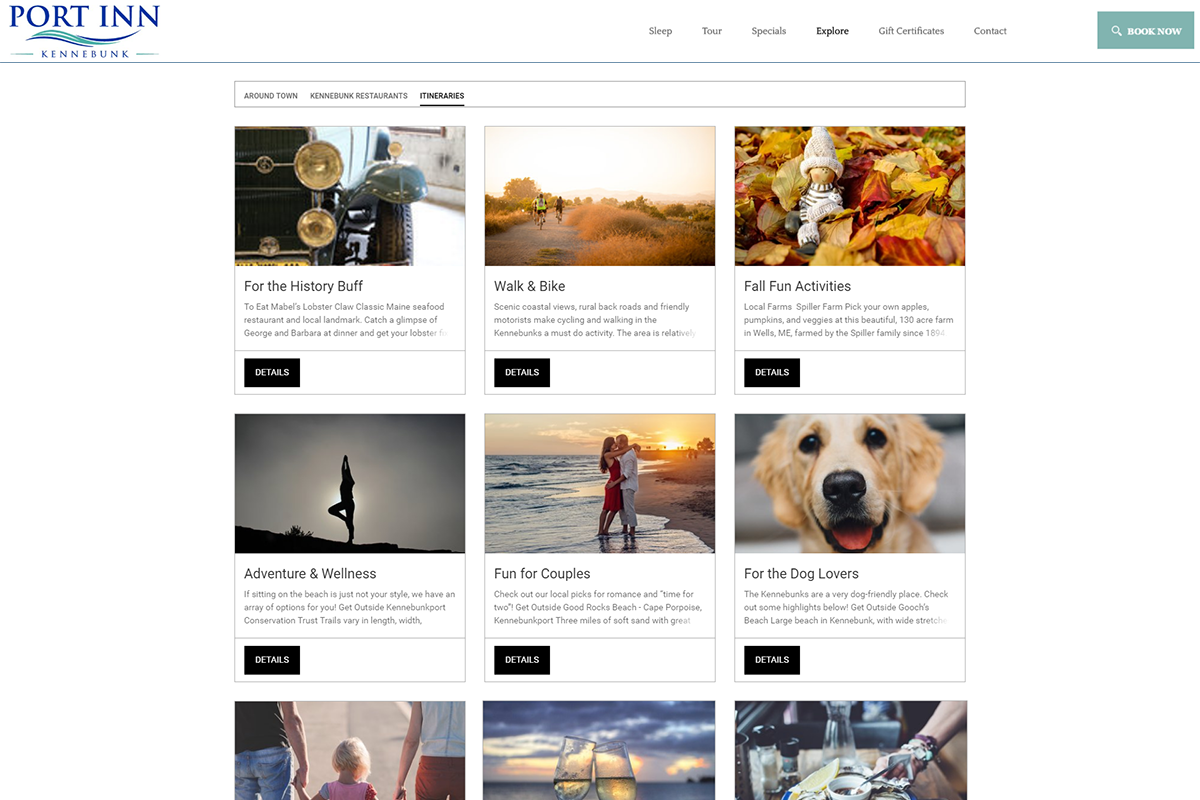
The Port Inn Kennebunk provides trip itineraries for different types of travelers
Personalization should continue throughout the onsite experience. You would be amazed how far simple acts, like remembering the name of your guests, can have on the perception of your property.
The 57 Hotel in Sydney, Australia writes a personalized message for each guest on the mirror, which is one of the first things they see as they enter their room. Messages like “happy birthday,” or “thanks for staying with us again,” are accompanied by the hashtags #57Selfie and #57Hotel. These hashtags encourage guests to post their mirror selfies on social media platforms like Instagram and Facebook. This type of user generated content helps extend your reach on social media and validates the story that is being told on your website.
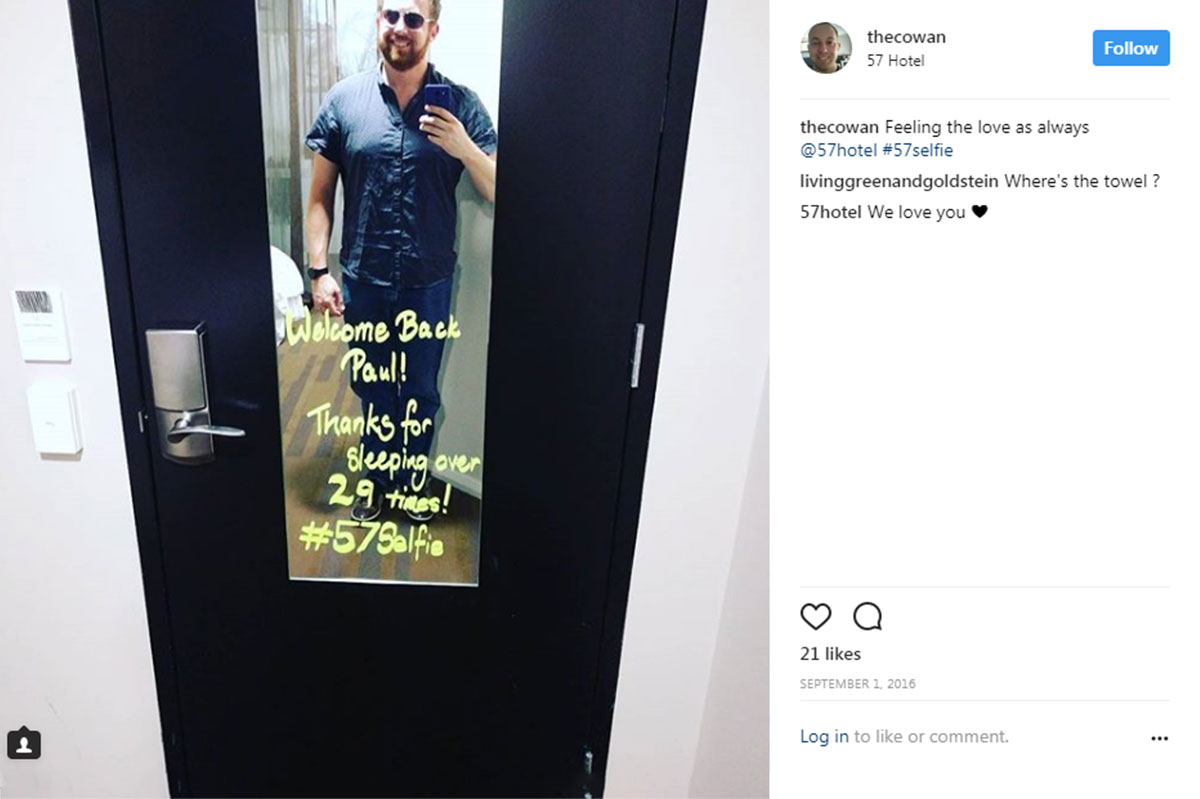
The 57 Hotel writes personalized messages to their guests and encourages them to share their #57Selfie on social media
5. Ask for feedback from your guests to identify areas where you can improve. They can tell you face-to-face, or leave private feedback for you when they submit their ratings.
Guest reviews are incredibly important for driving direct bookings. In fact, according to TripAdvisor, 96% of travel shoppers consider reviews important when researching a hotel, and 79% will read between 6-12 reviews before making a purchase decision. The higher the ranking, the better off you are.
Receiving a negative review isn’t the end of the world. Use negative reviews as a moment of self-reflection. Remember that every negative comment, even if you think it’s unjustified, represents how a guest felt staying at your property. Use it as an opportunity to understand how you can improve the guest experience, starting from how you position yourself on your website, through to the on-site experience. Make sure you respectfully and promptly respond to all negative reviews; 85% of travel shoppers agree that a thoughtful response to a review will improve their impression of the hotel.
How to Fight Back Against Airbnb
There’s no denying that Airbnb poses a real threat to hoteliers, but that doesn’t mean the battle is lost. By understanding what has made Airbnb so popular, hoteliers have the ammunition to fight back. These 5 tips to improve your digital storytelling are just a starting point.
To learn more about how Airbnb is disrupting the hospitality industry and what hoteliers can do in the face of this threat, download our new eBook – The Rise of Airbnb: How Hoteliers Can Fight Back.

